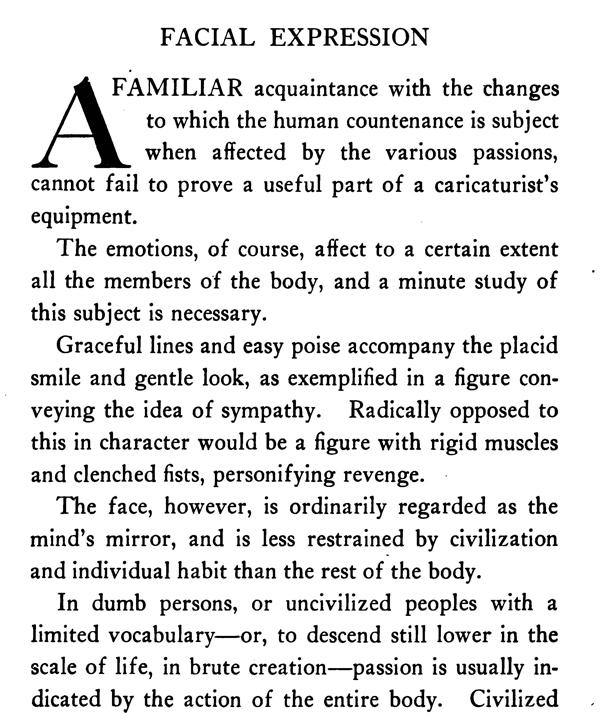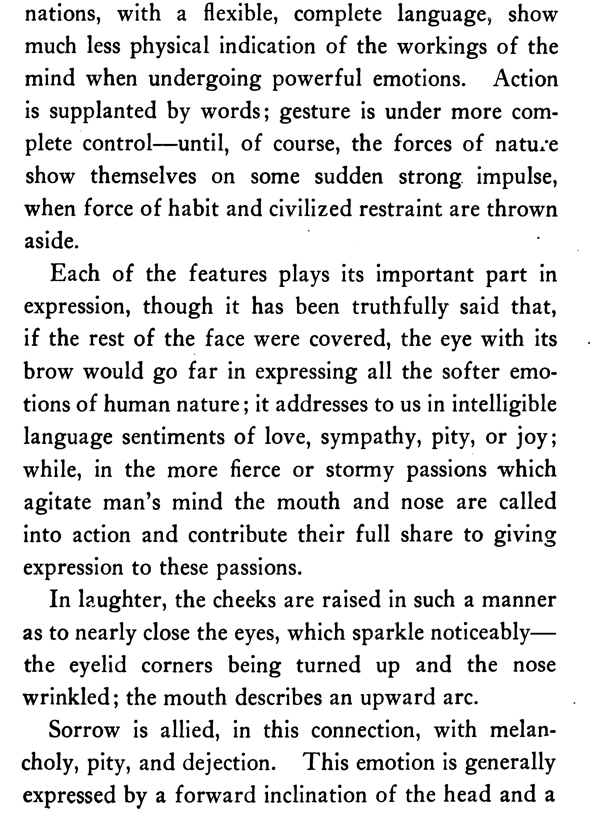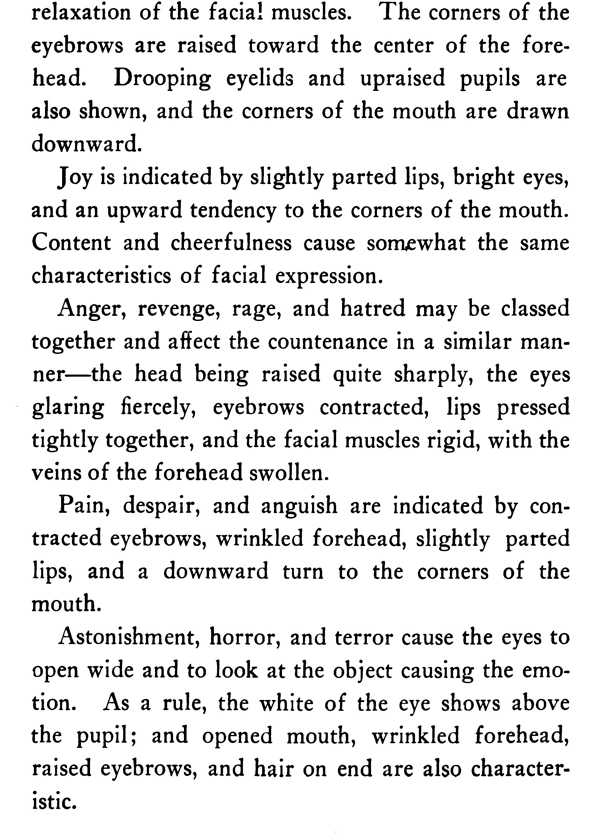Home > Directory Home > Drawing Lessons > How to Draw Caricatures & Cartoon Faces > How to Draw the Human's Face's Expressions and Emotions
HOW TO DRAW FACIAL EXPRESSIONS FOR CARTOONISTS AND CARICATURISTS
|
GO BACK TO THE HOME PAGE FOR CARICATURE DRAWING TUTORIALS
[The above words are pictures of text, below is the actual text if you need to copy a paragraph or two]
DRAWING FACIAL EXPRESSIONS
FAMILIAR acquaintance with the changes to which the human countenance is subject when affected by the various passions, cannot fail to prove a useful part of a caricaturist's equipment.
The emotions, of course, affect to a certain extent all the members of the body, and a minute study of this subject is necessary. Graceful lines and easy poise accompany the placid smile and gentle look, as exemplified in a figure conveying the idea of sympathy. Radically opposed to this in character would be a figure with rigid muscles and clenched fists, personifying revenge. The face, however, is ordinarily regarded as the mind's mirror, and is less restrained by civilization and individual habit than the rest of the body.
In dumb persons, or uncivilized peoples with a limited vocabulary—or, to descend still lower in the scale of life, in brute creation—passion is usually indicated by the action of the entire body. Civilized nations, with a flexible, complete language, show much less physical indication of the workings of the mind when undergoing powerful emotions. Action is supplanted by words; gesture is under more complete control—until, of course, the forces of nature show themselves on some sudden strong impulse, when force of habit and civilized restraint are thrown aside.
Each of the features plays its important part in expression, though it has been truthfully said that, if the rest of the face were covered, the eye with its brow would go far in expressing all the softer emotions of human nature; it addresses to us in intelligible language sentiments of love, sympathy, pity, or joy; while, in the more fierce or stormy passions which agitate man's mind the mouth and nose are called into action and contribute their full share to giving expression to these passions. In laughter, the cheeks are raised in such a manner as to nearly close the eyes, which sparkle noticeably—the eyelid corners being turned up and the nose wrinkled; the mouth describes an upward arc.
Sorrow is allied, in this connection, with melancholy, pity, and dejection. This emotion is generally expressed by a forward inclination of the head and a relaxation of the facial muscles. The corners of the eyebrows are raised toward the center of the forehead. Drooping eyelids and upraised pupils are also shown, and the corners of the mouth are drawn downward.
Joy is indicated by slightly parted lips, bright eyes, and an upward tendency to the corners of the mouth. Content and cheerfulness cause somewhat the same characteristics of facial expression.
Anger, revenge, rage, and hatred may be classed together and affect the countenance in a similar manner—the head being raised quite sharply, the eyes glaring fiercely, eyebrows contracted, lips pressed tightly together, and the facial muscles rigid, with the veins of the forehead swollen.
Pain, despair, and anguish are indicated by contracted eyebrows, wrinkled forehead, slightly parted lips, and a downward turn to the corners of the mouth.
Astonishment, horror, and terror cause the eyes to open wide and to look at the object causing the emotion. As a rule, the white of the eye shows above the pupil; and opened mouth, wrinkled forehead, raised eyebrows, and hair on end are also characteristic.Derision or contempt is expressed by raising the head and turning it somewhat from the object which excites the emotion. Half-closed eyes with lowered pupils, lips raised at the corners, and wrinkled nose are also customary.
Privacy Policy .... Contact Us








